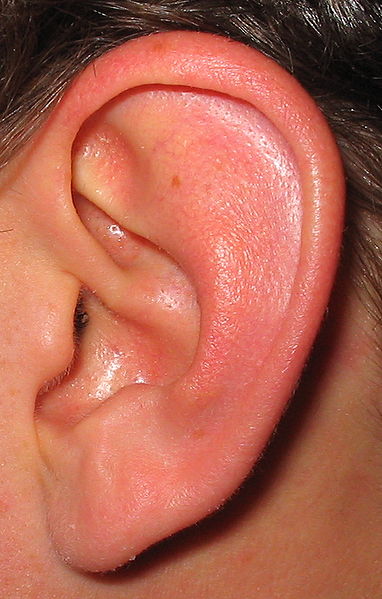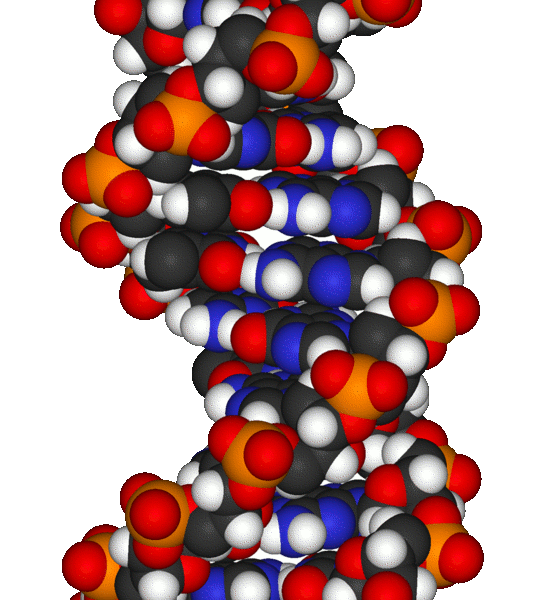The Genetics of Hearing
Interview with
Diana - We're joined by Dr. Karen Steel who works at the Wellcome Trust Sanger Institute and is looking at what can happen in our genes which could cause deafness. Hello, Karen.
Karen - Hello.
Diana - Let's start off with - are there many genetic causes of deafness?
Karen - Yes, there are. Our genome is a very common cause of hearing impairment in the human population. There are many, many different genes, any one of which can be affected, causing deafness. There are lots of different ways that genes can cause deafness. Sometimes, a person can have just a single gene that has a defect, a mutation causing deafness. In other cases, they could have a combination of a number of different variants of different genes that add together to give them a hearing impairment, including progressive hearing loss during their life. Or you can have genes that make you more sensitive to environmental damage like noise induced damage. Some people seem to be especially sensitive to noise induced damage. So genes can play a very important role in causing deafness and are probably involved in more than half of the cases of hearing impairment in the human population.
Diana - And how do you go about separating environmental causes of deafness from genetic?
Karen - Well, that's very difficult in a human population unless you have a large family  with many generations where you can actually track the inheritance of a single gene causing deafness through the generations and most human families aren't like that. For that reason, we usually turn to an animal model and in this case, we use the mouse as a model because the mouse inner ear is almost identical to the human inner ear - it's just a little bit smaller. The mouse also has many different forms of deafness including many of the same genes involved in human deafness.
with many generations where you can actually track the inheritance of a single gene causing deafness through the generations and most human families aren't like that. For that reason, we usually turn to an animal model and in this case, we use the mouse as a model because the mouse inner ear is almost identical to the human inner ear - it's just a little bit smaller. The mouse also has many different forms of deafness including many of the same genes involved in human deafness.
Diana - So, how many genes are linked to deafness which are the same in mice as they are in humans?
Karen - There are dozens and dozens. I mean, we know in the human population that there are over 130 different genes that can cause just simple deafness without any other signs of any other problem elsewhere in the body, but there are probably over 400 genes that include deafness as part of a whole set of different problems that a person might have. There are similar numbers of genes in the mouse that can cause hearing impairment, sometimes associated with other problems like visual problems for example.
Diana - So, I've got flagged up here that myosin 7a is a very important one that you look at. So, could you tell us a little bit about that?
Karen - Right. Myosin 7a is an important gene. It was the first gene that was identified to be associated with deafness and myself and colleagues, in London at the time, identified it first of all in the mouse. The great advantage of using the mouse in this case is that you need lots of offspring in order to study the inheritance of the mutant gene. And in the mouse, you can produce hundreds of offspring and therefore locate, on a particular chromosome very, very carefully, exactly where the mutant gene is and find it much more easily. So in that case, we could cut down the 3,000 million bases in the human genome, down to about 2 million bases. Now, 2 million bases, or 2 million subunits of DNA, is still an awful lot to search through for a mutation especially if it's just one of those bases that's different in the mutant allele, but it's still better than 3,000 million bases, so it's very helpful. You can only really do that sort of work in the mouse. We spent a number of years trying to find exactly where this gene was in a mouse mutant that had a hearing impairment and eventually we found it and it was a mutation in the myosin 7a gene.
Diana - And how did the myosin 7a gene actually affect the mechanical aspect of hearing?
 Karen - The myosin 7a is a motor molecule. It's called a motor molecule. It's like myosin in muscle, there are lots of different myosin molecules and they're all thought to be motor molecules. And they walk along little tram lines in cells called actin fibrils, so there are lots of actin fibrils like little train lines, going all around the cell and the myosins are thought to be like the trains, just carrying cargo from A to B within the cell. But in the case of the sensory hair cells which is where myosin 7a is expressed, the sensory hair cells are the cells that change the mechanical energy, the vibration of sound into a nervous impulse that leads to the brain. In these hair cells, the myosin 7a is located just underneath the cell membrane on little projections called hairs, that's why hair cells are called hair cells. They're like hairs or little fingers sticking out of the top of the hair cell. And the myosin 7a is located just underneath the membrane. Now, these hairs are really critical for normal hearing because when the vibration bends that bundle of hairs back, then tiny links in between these hairs are pulled and they pull open a channel which leads ions to flood into the cell, causing a voltage change, and that triggers the synaptic activity and a nervous impulse at the other end of the cell.
Karen - The myosin 7a is a motor molecule. It's called a motor molecule. It's like myosin in muscle, there are lots of different myosin molecules and they're all thought to be motor molecules. And they walk along little tram lines in cells called actin fibrils, so there are lots of actin fibrils like little train lines, going all around the cell and the myosins are thought to be like the trains, just carrying cargo from A to B within the cell. But in the case of the sensory hair cells which is where myosin 7a is expressed, the sensory hair cells are the cells that change the mechanical energy, the vibration of sound into a nervous impulse that leads to the brain. In these hair cells, the myosin 7a is located just underneath the cell membrane on little projections called hairs, that's why hair cells are called hair cells. They're like hairs or little fingers sticking out of the top of the hair cell. And the myosin 7a is located just underneath the membrane. Now, these hairs are really critical for normal hearing because when the vibration bends that bundle of hairs back, then tiny links in between these hairs are pulled and they pull open a channel which leads ions to flood into the cell, causing a voltage change, and that triggers the synaptic activity and a nervous impulse at the other end of the cell.
The hair cell in a normal person detects tiny, tiny movements - less than a nanometre. So that's really, really tiny - a millionth of a millimetre if you can imagine such a tiny movement. And so, in order to pick up such a tiny movement, this channel that is opened by these links, tugging at these links, has to be held very, very firmly in place and our experiments in the mouse mutants have shown that we think that the myosin 7a, instead of acting as a train carrying cargo around the cell, instead of that, it's actually acting as an anchor. So there are lots of actin fibrils inside these finger-like processes and the motor end of the myosin 7a binds to that, and the other end, instead of holding on to a cargo holds on to the cell membrane and keeps it very, very firmly in place so that the whole structure is ready to receive tiny, tiny movements. And if that molecule is not there, then the membrane is very floppy and so, it's very, very much more difficult to open that channel by tugging at it because you just pull at the membrane rather than just pulling at the channel itself.
Diana - I see and is it only myosin 7a that does that? Are there any others?
Karen - Well, there probably are other molecules. We know that there are lots and lots of other molecules involved in normal hearing processes, but we really have great difficulty in finding these and genetics is a way, is a tool, for finding those genes and those molecules and finding out more about the molecular basis of normal hearing function. The key thing about myosin 7a, if I could also say this, is that we found it first in the mouse and then we got in contact with our colleagues who work on human deafness and they very, very quickly, having a candidate gene, were able to find that there are mutations in human families with Usher syndrome, and Usher syndrome is a tragic disease where children are born deaf. They have a balance problem which means they develop their motor function late. They learn to walk late in life and then by the time they're about 10, they start to lose their vision as well through retinitis pigmentosa or degeneration of the retina. So, it's a very sad disease for children to have and it's very sad for the whole family. And we were able to find these mutations and find the cause for a large proportion of the cases Usher syndrome in the human population, and that was very, very useful for the families involved who really wanted to know what the problem was.
Diana - So now that we have these genes, what does that mean next for deaf people? Does it mean we might find a solution to deafness in the end? Is that even possible?
Karen - That's a very interesting question. There are lots of genes, hundreds of genes involved in deafness and we only know a few of them so far, so we do need to understand what they're doing and we need to understand how they're involved in deafness in the population as well. I think when we get to that point, when we have a better understanding, then we'll be able to think about therapeutic interventions. And particularly that's going to be important for people with progressive hearing loss, age relate hearing impairment, it's called. For those people, if we can intervene and stop their hearing getting any worse, that will be a great benefit to a lot of people. So, I think that that's the way forward, but we do need to find the rest of the genes, find out which ones are involved in the human population and understand what it is they're doing in the ear before we can think of ways of replacing their action if they're not acting properly.










Comments
Add a comment